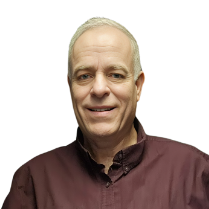Subject wastes are regulated by Ontario Regulation 347 and it includes hazardous wastes and liquid industrial waste streams.
Hazardous Waste
A hazardous waste includes the following:
- Hazardous Industrial Waste (Schedule 1);
- Acute hazardous waste chemical (Schedule 2A);
- Hazardous Waste Chemical (Schedule 2B);
- Severely Toxic Waste (Schedule 3, > 1 ppm);
- Ignitable waste (as per Regulation 347);
- Corrosive waste (as per Regulation 347);
- Reactive waste (as per Regulation 347);
- Pathological waste (as per Regulation 347);
- Leachate toxic waste (conc. > Schedule 4);
- PCB waste
And includes a mixture of the above categories.
Liquid Industrial Waste
A Liquid Industrial Waste means waste that is both liquid waste and industrial waste. Liquid wastes are wastes that will not pass the slump test and cannot be disposed in a landfill or placed down a sewer due to municipality sewer bylaw.
Subject Waste Classification
To determine if a waste stream is a subject waste, this requires process and technical knowledge on the waste generation process as well as analytical data on the waste stream such as pH, flashpoint, leachate toxicity analysis, etc.
Subject waste classification is done in a specific order set by going through the Waste Characterization Flowchart. The first question that gives you a Yes in this flowchart would be the primary waste classification and the letter at the bottom of that question will give you the letter of that classification. (i.e. S, P, A, B, H or I, etc.)
Note: there could be a secondary waste classification if the material has more than one hazard. (i.e. both acidic and flammable)
Waste Classes
There is a three digit waste class number that would proceed the letter as part of the subject waste classification. Inorganic waste streams are 111 through 150; while Organic waste streams are 211 through 282. The three-digit waste class that best describes the subject waste is used and the three digit number is followed by the letter representing the primary classification. (i.e. I for Ignitable)

Hazardous Waste Number
A Hazardous Waste Number is a unique 4-digit code (i.e. a letter followed by 3 numbers) used to identify individual listed and characteristic wastes in Column 1 of Schedules 1, 2A, 2B, 3 and 5 of Regulation 347. The hazardous waste number will be chosen as you identify the primary and secondary characterizations of your waste stream.
Each of these schedules assign the following letter to each waste in the Schedule:
- Schedule 1: the letters F and K;
- Schedule 2A: the letter P;
- Schedule 2B: the letter U;
- Schedule 3: the letter S;
- Schedule 5: the letters D and E.
There are no hazardous waste numbers associated with Liqid Industrial (L), PCB (D) and Pathological Wastes (P).
The hazardous waste numbers for listed waste streams will start with the letters F, K, P, U or S. A waste stream will never have two hazardous waste numbers starting with the letters F, K, P, U or S unless the waste stream is a mixture of more than one listed waste.
If a listed waste is also a characteristic waste, all hazardous waste numbers must be identified in the LDR Notification Form, unless the treatment requirement for the listed waste contains the regulated constituents that caused the waste to be defined as characteristic waste. In this case, only the hazardous waste number for the listed waste has to be identified in the LDR Notification Form (i.e. hazardous waste numbers in Schedule 5 would not need to be identified).
Key Summary Reminder
- To properly classify a subject waste, you not only need to know hazardous properties, but need to understand the generation process.
- When going through the waste classification flowchart, the primary hazard is the first classification is the one furthest to the left.
- A subject waste can have more than one hazard classification and hence more than one hazardous waste number.
Should you have any questions on the classification of subject waste, or would like to request assistance in the classification of your waste streams click here to contact Mark Roehler Training Services.








